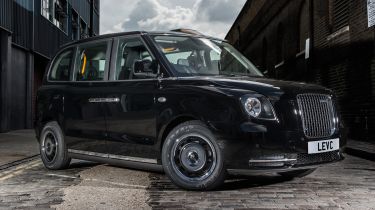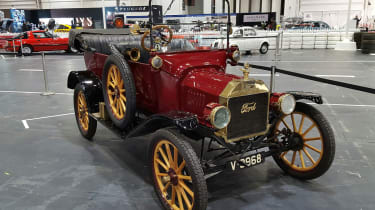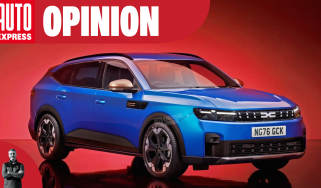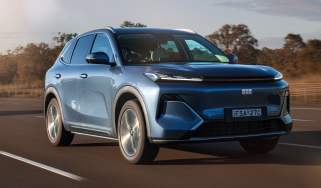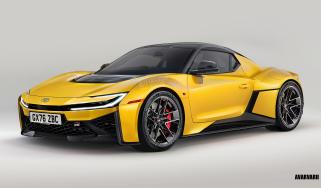History of the electric car: from the first EV to the present day
Starting with the first electric car, we look back at where it all began, and how EV tech has developed
As legislation squeezes harder and the appetite of the buying public increases, just about every major car manufacturer is focused on filling its range with electric cars.
It’s a trend that’s seen as the future, but the EV is hardly a new development. Electric cars have been quietly humming in the background for generations – and were widely used much earlier than many realise.
This is no big surprise; electricity has been seen as a conceivable means of propulsion since the car’s inception, especially compared with alternatives at the time.
The abilities of early cars and the state of early roads meant journeys were typically short, and vehicles for the most part were confined to the boundaries of the city. Here lies an interesting parallel with contemporary electric cars – for quick urban journeys, electric cars made just as much sense in the motor car’s infancy as they do today.
Steam-powered vehicles of the time could take up to an hour to prepare and heat for a journey, while early combustion-engined cars were dirty, unreliable, and difficult to start and operate. By comparison, electric cars were seen as convenient, easy-to-use choices with no gears.
The earliest electric vehicles
Pinpointing responsibility for the birth of the electric car isn’t straightforward; its creation is down to the work of a number of pioneers and inventors.
The invention of the electric motor is often credited to Hungarian engineer Anyos Jedlik, while Scottish chemist and engineer Robert Davidson is credited with creating the world’s first electric vehicle, first shown to the public in an exhibition in Aberdeen in 1839.
The vehicle used a simple electric motor and battery – essentially a wooden box with liquid-acid electrolyte and zinc plates – but proved that electricity (then known as electromagnetism and still poorly understood) could move people in vehicles.
Battery technology would take some time to catch up to Davidon’s aspirations. French physicist Gaston Plane invented commercial rechargeable lead-acid batteries in 1859, but it was English firm Elwell and Parker that created the first useable electric cars – or rather, horseless carriages. Other British firms got in early, including Edinburgh-based Maldevic with its four-wheeled carriages driven by a fifth central wheel underneath.
To really get a sense of the early impact of the electric car, though, it’s best to look stateside. The years around the turn of the 20th century are often described as a golden age of electric motoring, due to a strong EV presence on the streets of US cities.
In 1897, the first commercial users of electric carriages were New York City taxi drivers; the city’s fleet eventually grew to over 60 electric cabs. Some historians estimate that around a third of cars on American streets in 1900 were electric, while some sources claim EVs outsold combustion cars in 1899 and 1900. These cars were city dwellers only, though, with ranges and top speeds in the teens.
Here in Europe, Walter Bersley’s ‘Hummingbird’ taxis would sometimes be spotted on the streets of London, while the first car to bear Ferdinand Porsche’s name – the P1 from 1898 – was electric.
The internal combustion revolution
However, this early popularity was built more on the shortfalls of combustion cars than the abilities and accessibility of EVs. Various factors contributed to a fast decline, not least the repealing of the UK’s red flag act in 1896 that saw interest in longer-distance, higher-speed petrol-powered vehicles increase.
As Mike Ward, then curator at the Grampian Transport Museum, told us in an interview in 2019, “Motor cars were complex, unreliable, filthy, expensive, but the one thing they had was range, even then.”
“You couldn’t drive the length of the UK in an electric car at that time, but as soon as the motor car appeared people started driving from Lands End to John O’Groats.”
Shrinking oil prices and mass production techniques pioneered by Ford with the Model T in 1908 meant combustion-engined cars soon became cheaper, plus easier to use thanks to advances such as electric starter motors. Growing road networks also meant growing demand for faster cars with longer ranges and quicker fill-up times.
It led to a dark age for electric cars which lasted for much of the 20th century, as affordable petrol vehicles revolutionised how we got around. The electric motor meanwhile, found a long-term new home in the humble milk float as car makers turned their backs on the technology.
Electric cars in the 20th Century
A mild revival was sparked during the oil crises of the seventies, and the electric car made an unworldly cameo in 1971; the electric Lunar Roving Vehicle was the first car driven on the moon, with a range of 57 miles. Electrified versions of the BMW 1600, boasting 43bhp Bosch motors and regenerative braking, starred at the 1972 Munich Olympics as marathon support vehicles.
When car manufacturers began to return to EVs in the nineties in response to tightening environmental laws, their offerings were produced in tiny numbers and most were crude conversions of conventional models.
Still, this era did give us a taste of the future. In 1996, General Motors released the EV1 – the first mass-produced, purpose-built modern electric car from one of the industry’s key players. It was released under a leasing programme, and just over 1,000 were produced, but the saga ended in controversy. When GM axed the EV1 programme in 2003, many models were removed from the road and crushed.
Sony was the first company to industrialise the production of lithium-ion batteries for its portable electronic devices, a move that would go on to become instrumental in the viability of electric cars in the modern age.
The beginnings of the modern electric car
Since then, electric cars have crept more into the conscience of consumers and the industry as a whole thanks to the advancement of hybrid tech, government subsidies, new regulations, increasing environmental concerns and, importantly, large technological advances – especially in the battery arena.
Successful early pioneers included the Nissan Leaf in 2010 and the Renault Zoe in 2013, with the former still competitive today in only its second generation.
Cars like these have helped the EV to drop its sideshow reputation in recent years and cement itself as the next logical step. It helps that modern electric cars are fast, efficient, practical and cheap to run – and that charging has become much less of a chore than even just a few years ago.
That shift in public perception can also be attributed, at least in part, to Tesla, a car company that thoroughly disrupted the market with its high-tech, long-range, fast-charging Model S in 2012 - long before most established manufacturers had realised the potential of EVs, which at that stage remained a niche choice. The American brand was also an early proponent of increased autonomy and remains at the forefront with its AI-run driver assistance systems today.
Early responses to Tesla’s growing popularity included purpose-built EVs from big names such as Jaguar with the I-Pace in 2018 and Audi with the e-tron SUV in 2019. Many makers revealed big plans for extensive all-electric ranges, including Mercedes with its EQ models and the Volkswagen ID lineup.
In 2024, it feels as though the electric car has only just begun to hit its stride, with just about every mainstream manufacturer in on the action. Public perception has shifted rapidly too, with many manufacturers already rearranging their ranges and stripping away electric-only sub-brands hastily created just a few years ago. The EV has finally gone mainstream.
As electric car technology matures, so too does modern electric car design, with many manufacturers making the most of the freedom offered by skateboard-style platforms.
Could 2024 mark another turning point in the story of the electric car? With so many great electric cars on the horizon, we don’t see why not.
Your electric car questions answered
- Should i buy an electric car?
- What’s the best way to buy an electric car?
- Is a hybrid, plug-in hybrid or electric car right for me?
- Should i buy a used electric car?
- Can i get a plug-in car grant?
- How is electric car range calculated?
- How much do electric cars cost to charge?
- How much do electric cars cost to run?
- How long do electric car batteries last?
- What happens to old electric car batteries?
- Should i get a heat pump on my electric car?
- What are fast charging and rapid charging?
- Should i get a home electric car charger?
- Can i tow with an electric car?
- Is wireless electric car charging the future?
- What’s the history of the electric car?
- What’s the future of the electric car?
What do you think the biggest problem EV users will face in the coming years? Let us know in the comments...
Find a car with the experts

